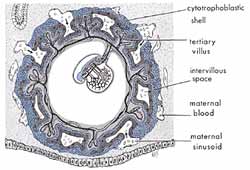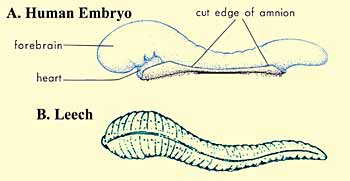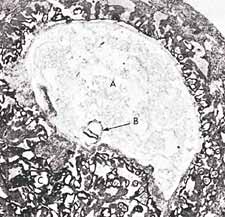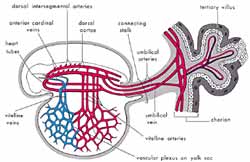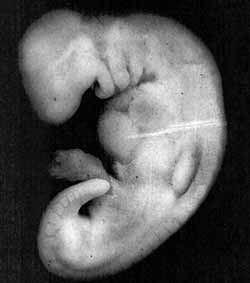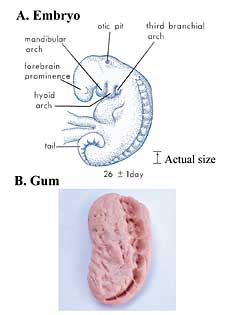Svar till Lobax [
Gå till post]:
2. Homo erectus som det faktiskt heter var något som du skulle kalla "övergångsart", alltså en art som fanns innan människan och som sedan människan tillslut kom att utvecklas ur. I högsta grad de bevis du efterfrågar.
3. Homo erectus är som sagt en separat, utdöd art och vi hittar såldes definitivt inte någon människa som har deras gener eller skalle. Faktum är att vi knappt hittar några gener från våra bortgångna kusiner neandertalarna bland oss, en ras som trots allt existerade betydligt parallellt med vår betydligt längre.
nu jäklar måste jag piska den här ordentligt
nej nej, du blundar till mina bevis, varför har vi människor som ser ut som homoeréctus idag
 The large eyebrow protrusions on Homo erectus skulls, and features such as the backward-sloping forehead, can be seen in a number of races in our own day, as in the Malaysian native shown here.
The large eyebrow protrusions on Homo erectus skulls, and features such as the backward-sloping forehead, can be seen in a number of races in our own day, as in the Malaysian native shown here. Homo erectus
According to the fanciful scheme suggested by evolutionists, the internal evolution of the Homo genus is as follows: First Homo erectus , then so-called "archaic" Homo sapiens and Neanderthal man (Homo sapiens neanderthalensis), and finally, Cro-Magnon man (Homo sapiens sapiens). However all these classifications are really only variations and unique races in the human family. The difference between them is no greater than the difference between an Inuit and an African, or a pygmy and a European.
Let us first examine Homo erectus , which is referred to as the most primitive human species. As the name implies, Homo erectus means "man who walks upright." Evolutionists have had to separate these fossils from earlier ones by adding the qualification of "erectness," because all the available Homo erectus fossils are straight to an extent not observed in any of the australopithecines or so-called Homo Habilis specimens. There is no difference between the postcranial skeleton of modern man and that of Homo erectus .
The primary reason for evolutionists' defining Homo erectus as "primitive" is the cranial capacity of its skull (900-1,100 cc), which is smaller than the average modern man, and its thick eyebrow projections. However, there are many people living today in the world who have the same cranial capacity as Homo erectus (pygmies, for instance) and other races have protruding eyebrows (Native Australians, for instance). It is a commonly agreed-upon fact that differences in cranial capacity do not necessarily denote differences in intelligence or abilities. Intelligence depends on the internal organization of the brain, rather than on its volume.197
The fossils that have made Homo erectus known to the entire world are those of Peking man and Java man in Asia. However, in time it was realized that these two fossils are not reliable. Peking man consists of some elements made of plaster whose originals have been lost, and Java man is composed of a skull fragment plus a pelvic bone that was found yards away from it with no indication that these belonged to the same creature. This is why the Homo erectus fossils found in Africa have gained such increasing importance. (It should also be noted that some of the fossils said to be Homo erectus were included under a second species named Homo ergaster by some evolutionists. There is disagreement among the experts on this issue. We will treat all these fossils under the classification of Homo erectus .)
The most famous of the Homo erectus specimens found in Africa is the fossil of "Narikotome Homo erectus ," or the "Turkana Boy," which was found near Lake Turkana in Kenya. It is confirmed that the fossil was that of a 12-year-old boy, who would have been 1.83 meters tall in adolescence. The upright skeletal structure of the fossil is no different from that of modern man. The American paleoanthropologist Alan Walker said that he doubted that "the average pathologist could tell the difference between the fossil skeleton and that of a modern human." Concerning the skull, Walker wrote that he laughed when he saw it because "it looked so much like a Neanderthal."198 As we will see in the next chapter, Neanderthals are a modern human race. Therefore, Homo erectus is also a modern human race.

THE 10.000 YEAR-OLD HOMO ERECTUS
These two skulls, discovered on October 10, 1967, in the Kow Swamp in Victoria, Australia, were named Kow Swamp I and Kow Swamp V

Alan Thorne and Philip Macumber, who discovered the skulls, interpreted them both as Homo sapiens skulls, whereas they actually contained many features reminiscent of Homo erectus . The only reason they were treated as Homo sapiens was the fact that they were calculated to be 10.000 years old. Evolutionist did not wish to accept the fact that Homo erectus , which they considered a "primitive" species and which lived 500.000 years before modern man, was a human race which lived 10.000 years ago.
Even the evolutionist Richard Leakey states that the differences between Homo erectus and modern man are no more than racial variance:
One would also see differences: in the shape of the skull, in the degree of protrusion of the face, the robustness of the brows and so on. These differences are probably no more pronounced than we see today between the separate geographical races of modern humans. Such biological variation arises when populations are geographically separated from each other for significant lengths of time.199
Homo erectus AND THE ABORIGINES
The Turkana Boy skeleton shown at the side is the best preserved example of Homo erectus that has so far been discovered. The interesting thing is that there is no major difference between this 1.6 million-year-old-fossil and people of our day. The Australian aboriginal skeleton above particularly resembles Turkana Boy. This situation reveals once again that Homo erectus was a genuine human race, with no "primitive" features
Professor William Laughlin from the University of Connecticut made extensive anatomical examinations of Inuits and the people living on the Aleut islands, and noticed that these people were extraordinarily similar to Homo erectus . The conclusion Laughlin arrived at was that all these distinct races were in fact different races of Homo sapiens (modern man):

Homo erectus 'S SAILING CULTURE "Ancient mariners: Early humans were much smarter than we suspected" According to this article in the March 14, 1998, issue of New Scientist, the people that evolutionists call Homo erectus were sailing 700,000 years ago. It is impossible, of course, to think of people who possessed the knowledge, technology and culture to go sailing as primitive
When we consider the vast differences that exist between remote groups such as Eskimos and Bushmen, who are known to belong to the single species of Homo sapiens , it seems justifiable to conclude that Sinanthropus [an erectus specimen] belongs within this same diverse species.200
It is now a more pronounced fact in the scientific community that Homo erectus is a superfluous taxon, and that fossils assigned to the Homo erectus class are actually not so different from Homo sapiens as to be considered a different species. In American Scientist, the discussions over this issue and the result of a conference held on the subject in 2000 were summarized in this way:
Most of the participants at the Senckenberg conference got drawn into a flaming debate over the taxonomic status of Homo erectus started by Milford Wolpoff of the University of Michigan, Alan Thorne of the University of Canberra and their colleagues. They argued forcefully that Homo erectus had no validity as a species and should be eliminated altogether. All members of the genus Homo, from about 2 million years ago to the present, were one highly variable, widely spread species, Homo sapiens , with no natural breaks or subdivisions. The subject of the conference, Homo erectus , didn't exist.201
The conclusion reached by the scientists defending the abovementioned thesis can be summarized as "Homo erectus is not a different species from Homo sapiens , but rather a race within Homo sapiens ." On the other hand, there is a huge gap between Homo erectus , a human race, and the apes that preceded Homo erectus in the "human evolution" scenario (Australopithecus , Homo Habilis , and Homo rudolfensis ). This means that the first men appeared in the fossil record suddenly and without any prior evolutionary history.
197 Marvin Lubenow, Bones of Contention: a creationist assessment of the human fossils, Baker Books, 1992, p. 83.
198 Boyce Rensberger, Washington Post, 19 October 1984, p. A11.
199 Richard Leakey, The Making of Mankind, Sphere Books, London, 1981, p. 116.
200 Marvin Lubenow, Bones of Contention: a creationist assessment of the human fossils, Baker Books, 1992. p. 136.
201 Pat Shipman, "Doubting Dmanisi," American Scientist, November- December 2000, p. 491

